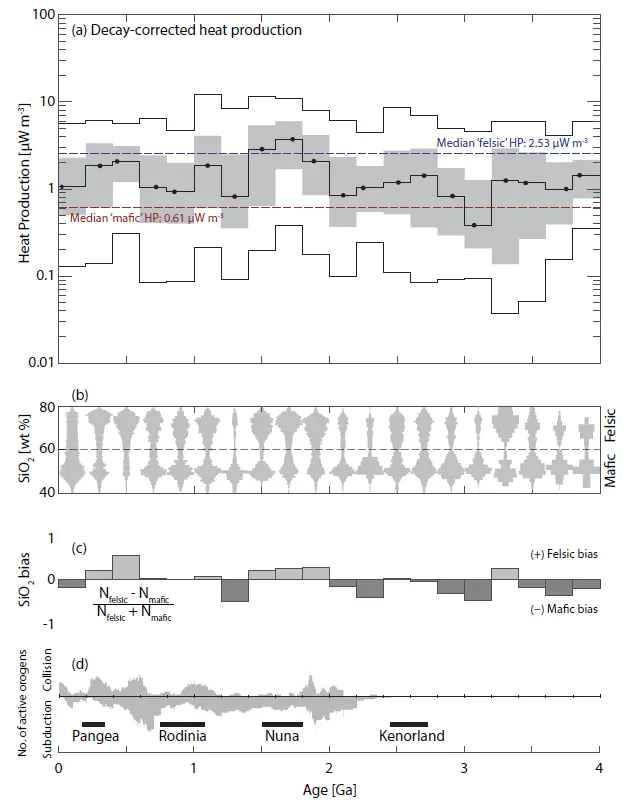Variations in continental heat production from 4 Ga to the present: Evidence from geochemical data

Abstract
Crustal heat production accounts for 30 to 40% of continental heat loss and enhances thermally controlled processes such as melting and metamorphism, yet is in general poorly constrained. We present a new model for continental igneous heat production from ~4 Ga to the present using a global geochemical database of 75,800 whole-rock analyses providing the highest resolution record to date. Hypotheses advanced to explain past heat production–age variations include erosion of the enriched felsic upper crust, decay of the radioactive elements, geodynamic processes such as the supercontinent cycle, secular cooling, lithological controls, and/or a major shift in the bulk composition in the crust during the late Archean. However, previous heat production–age models are often coarsely resolved, poorly sampled, and/or spatially biased. To test these hypotheses and refine secular trends in crustal heat production, we construct a model by correcting for radioactive decay and normalizing by SiO2 content to remove the gross influence of lithology. The variations through time are highly correlated among both plutonic and volcanic samples, as well as mafic and felsic distributions. Unsurprisingly, compositional normalization indicates lithological control is the dominant factor on heat production after the influence of decay is removed. Following these adjustments, we find that heat production has been relatively constant through time. We suggest the heat production–age pattern does not significantly reflect the influences of erosion, secular cooling, depletion, or the supercontinent cycle as suggested by some previous studies. Heat producing element distributions might be expected to be similar regardless of the age of melt generation, once compositionally normalized and adjusted for the decay of the various isotopes. Compared to this reference model, we observe a heat production and heat producing element enrichment deficit, particularly for the Archean and Paleoproterozoic. This deficit is accounted for by a rapid increase in heat producing element concentrations associated with a shift in the bulk composition of the crust from the early Archean to ∼2.7 Ga. Additionally, we suggest that the heat production record may also represent a biased sample set, perhaps as a result of selective preservation due to thermal stability. This new model will lead to better crustal heat production and global heat loss estimates both at present and within Earth’s past.